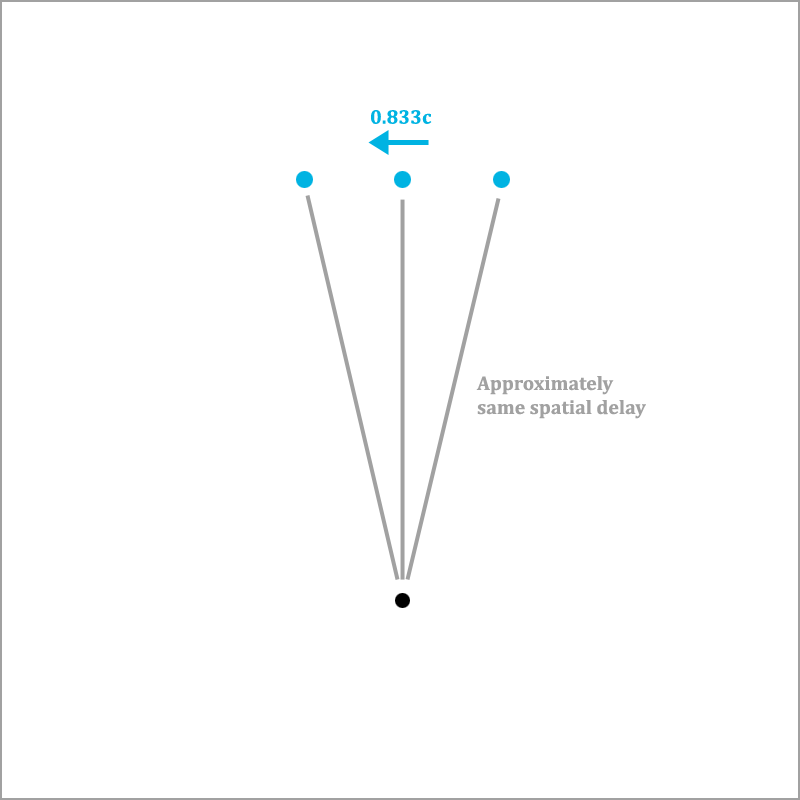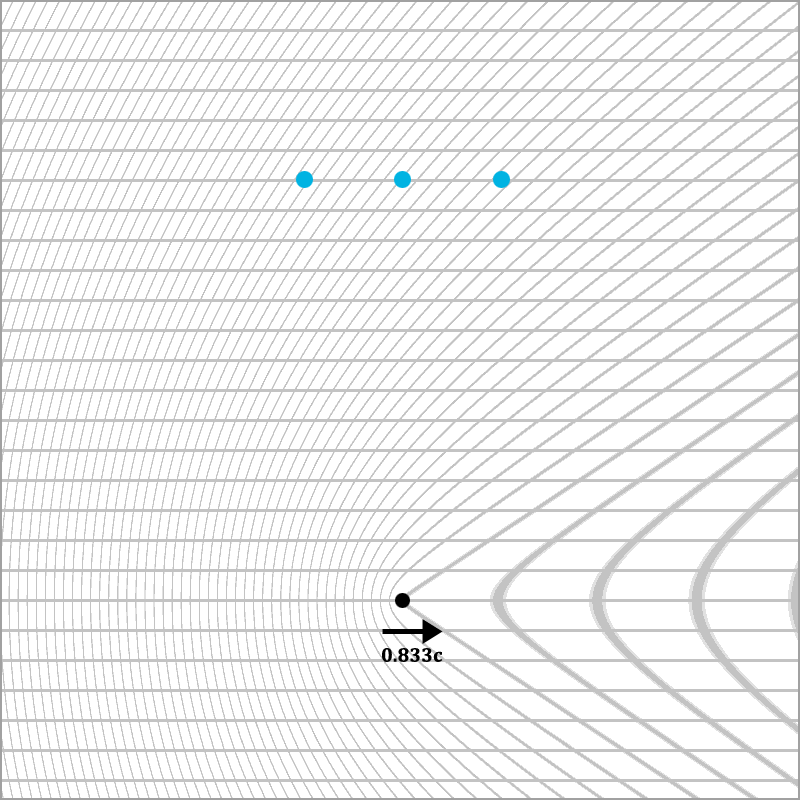3.5 Mutual ocular relativistic effects
In the previous section, we compared the measurable effects of time dilation and length contraction between two frames of reference. We did this by considering objects passing by each other at an infinitely close distance. What happens if we move away a bit? Can one reference frame see the other reference frame being time dilated and length contracted, and how could this be mutual? We can use the IGS to determine what occurs.
When objects pass by an observer at an angle approximately perpendicular to the vector of their movement, the spatial delays between the observer and the different positions of the objects are approximately the same, meaning that the ocular experience at this angle must match how the observer's synchronized frame of reference would measure the length of the objects and the relative progression of time. The ocular experience at this angle must be such that the moving objects are length contracted and redshifted.
 When objects pass by an observer at an angle approximately perpendicular to the vector of their movement, the spatial delays between the observer and the different positions of the objects are approximately the same, meaning that the ocular experience at this angle must match how the observer's synchronized frame of reference would measure the length of the objects and the relative progression of time. The ocular experience at this angle must be such that the moving objects are length contracted and redshifted.
When objects pass by an observer at an angle approximately perpendicular to the vector of their movement, the spatial delays between the observer and the different positions of the objects are approximately the same, meaning that the ocular experience at this angle must match how the observer's synchronized frame of reference would measure the length of the objects and the relative progression of time. The ocular experience at this angle must be such that the moving objects are length contracted and redshifted.
 If we instead regard the distant blue objects as standing still and the observer as a moving object, we can apply the IGS of such relative movement. We see that the observer can consider the objects at a 90-degree angle to have been bent up to lie beside the observer. They could be considered to be already moving away and would thus already appear compact and redshifted. What is ocular at a 90-degree angle is always consistent with what is measureable in one's own frame of reference. We can also conclude that the blue objects see the black object in the same manner. They can consider the black object to be moving away, and it will also appear to be contracted and red shifted when passing by at 90 degrees.
If we instead regard the distant blue objects as standing still and the observer as a moving object, we can apply the IGS of such relative movement. We see that the observer can consider the objects at a 90-degree angle to have been bent up to lie beside the observer. They could be considered to be already moving away and would thus already appear compact and redshifted. What is ocular at a 90-degree angle is always consistent with what is measureable in one's own frame of reference. We can also conclude that the blue objects see the black object in the same manner. They can consider the black object to be moving away, and it will also appear to be contracted and red shifted when passing by at 90 degrees.